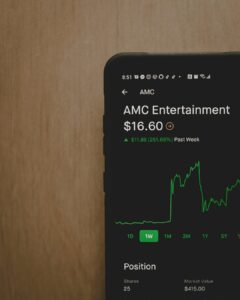The forex market is one of the most volatile and dynamic markets in the world, with trillions of dollars being exchanged every day. While this market provides a wealth of opportunities to traders, it can also be incredibly challenging to navigate. That’s where technology comes in. In recent years, the role of technology in CFD forex trading has become increasingly important, with automation changing the game for traders around the world.
The rise of automation in forex trading has been driven largely by advances in technology, including the development of powerful algorithms and artificial intelligence (AI) systems. These tools allow traders to automate many of the tasks involved in forex trading, including market analysis, trade execution, and risk management.
One of the most significant benefits of automation in forex trading is its ability to improve efficiency. By automating many of the routine tasks involved in trading, traders can focus their time and energy on more strategic aspects of the trading process, such as developing trading strategies and analyzing market trends.
Another benefit of automation in forex trading is its ability to reduce the risk of human error. Traders who rely on manual trading methods are more likely to make mistakes, such as entering incorrect trade sizes or forgetting to set stop-loss orders. By automating these tasks, traders can reduce the risk of these types of errors and improve their overall trading performance.
One of the most popular forms of automation in forex trading is the use of trading robots, also known as expert advisors (EAs). These programs are designed to analyze market data, identify trading opportunities, and execute trades automatically based on pre-defined rules. Trading robots can be highly effective at generating profits, but they also carry some risks. It’s important for traders to carefully research and test any trading robot before using it in a live trading environment.
Another important aspect of automation in forex trading is the use of advanced analytics and AI systems. These tools can help traders to analyze massive amounts of market data and identify patterns and trends that would be difficult or impossible to detect using manual methods. AI systems can also be used to develop predictive models that can help traders to make more accurate forecasts about future market movements.
Despite the many benefits of automation in forex trading, it’s important to remember that technology is not a magic solution that will guarantee profits. Successful trading still requires a significant amount of skill, knowledge, and experience. Traders who rely too heavily on automation without understanding the underlying principles of the market are likely to experience disappointment and losses.
In conclusion, the role of technology in CFD forex trading is becoming increasingly important, with automation providing traders with powerful tools for improving efficiency and reducing risk. However, it’s important for traders to approach automation with caution and to carefully research and test any tools or systems before using them in a live trading environment. With the right approach, technology can be a powerful ally for traders looking to succeed in the dynamic and challenging world of forex trading.






